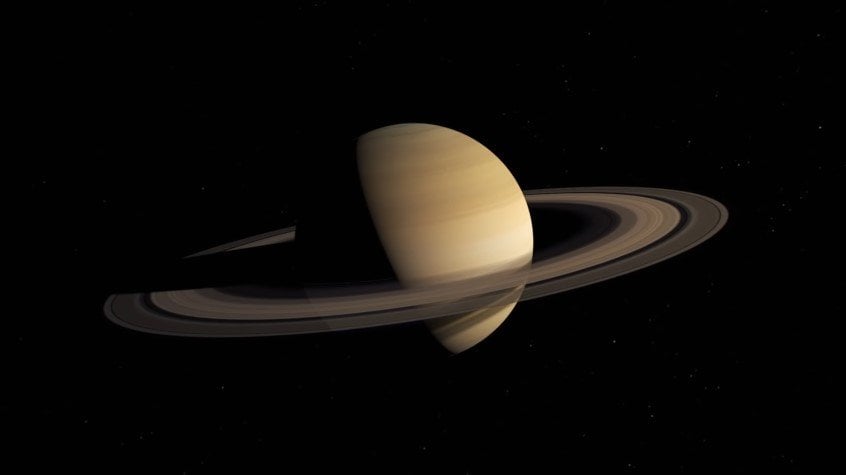Scientists continue to analyze data delivered from NASA’s Cassini spacecraft after its deadly plunge into Saturn’s atmosphere in 2017. In addition to all the data they received, scientists have learned some interesting things about the gas giant’s rings. Now a new study of Cassini’s data suggests Saturn’s rings may be younger than previously thought.
Thanks to measurements from Cassini’s final trajectory, researchers were able to estimate the amount of material in the rings. They used the strength of their gravitational pull to estimate their weight. They estimate the rings to be about 40% of the mass of Saturn’s moon Mimas, which is 2,000 times smaller than Earth’s moon. Based on that estimate, they now believe Saturn’s rings are much younger than previously thought, originating only 10 million years ago.
Some scientists previously believed the rings were formed along with the planet 4.5 billion years ago from icy debris which remained in orbit around it after the solar system formed. However, other scientists thought the rings were much younger than that. They suggested Saturn’s massive gravity may have captured an icy object from the Kuiper belt or a comet and then broke down the object into debris, forming rings.
“The first time I looked at the data I didn’t believe it, because I trusted our models and it took a while to sink in that there was some effect that changed the gravity field that we had not considered,” professor Burkhard Militzer of University of California, Berkeley said in a statement. “That turned out to be massive flows in the atmosphere at least 9,000 kilometers deep around the equatorial region. We thought preliminarily that these clouds were like clouds on Earth, which are confined to a thin layer and contain almost no mass. But on Saturn they are really massive.”
Scientists also made calculations for the surface clouds at Saturn’s equator, and they believe the clouds rotate 4% faster than the layer that is 6,000 miles deep. The researchers estimate that the lower layer takes nine minutes longer to rotate than the clouds above the equator, which circle the planet once every 10 hours and 33 minutes.
“The discovery of deeply rotating layers is a surprising revelation about the internal structure of the planet,” Cassini project scientist Linda Spilker of NASA’s Jet Propulsion Laboratory explained. “The question is what causes the more rapidly rotating part of the atmosphere to go so deep and what does that tell us about Saturn’s interior.”
Militzer, who models planet interiors, was also able to calculate the mass of the planet’s rocky core. He now estimates it to be 15 to 18 times the mass of Earth, which nearly matches previous estimates. The study which suggests Saturn’s rings are younger than previously thought was led by scientist Luciano Iess from the Sapienza University of Rome. The findings from the study were published in the journal Science.





